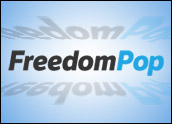
Kim Dotcom didn’t make his millions from the illegal downloads that took place on Megaupload, the now-defunct site he ran. Rather, he mostly made his money from ads that ran on the illegal download site, which highlights a need for ad networks to do a better job policing their stable of publishers.
The connection between ad networks and piracy sites is the subject of a report released by the Annenberg Innovation Lab at the University of Southern California. The report, titled “The USC Annenberg Lab Advertising Transparency Report,” was released Thursday.
“Large pirate sites distribute illegal content and continue to steal trademarked, copyrighted content and siphon millions of dollars away from the creative community, making it much harder for artists to make a living. We do not believe that government regulation alone is the answer to the piracy problem, but rather that the self-regulation of major sectors like the online advertising industry could make it harder for the Kim Dotcoms of the world to unfairly exploit artists. We look forward to working with advertising agencies and networks in the coming months to address this issue,” said Professor Jonathan Taplin, director of the USC Annenberg Innovation Lab.
The Usual Suspects
Google and Yahoo made the top-10 list, when looking at ad networks placing ads on pirate sites. The top 10 list includes Openx, Google (including DoubleClick), Exoclick, Sumotorrent, Propellerads, Yahoo (including Right Media), Quantcast, Media Shakers, Yesads and Infolinks. More ad networks were reviewed in the study, though not listed in the report.
Google falls in second among the 10 ad networks listed in the report. A Google spokesperson, who has yet to see the report in advance of its release, believes the implications that Google appear on illegal download sites is “mistaken.”
“We have not seen a copy of this report and don’t know the methodology, but to the extent it suggests that Google ads are a major source of funds for major pirate sites, we believe it is mistaken. Over the past several years, we’ve taken a leadership role in this fight, partnering with industry organizations to cut off the flow of money to piracy sites, as well as investing significant time and money to keep copyright-infringement content out of our network. The complexity of online advertising has led some to conclude, incorrectly, that the mere presence of any Google code on a site means financial support from Google,” Google spokesperson Andrea Faville told the E-Commerce Times.
Yahoo appears in the No. 6 position in the report. The search engine was listed primarily for its Right Media property.
“Right Media has longstanding policies of prohibiting certain types of content and behavior from our exchange, as part of our commitment to creating a safe and healthy marketplace for our customers and their end users. Our customers are contractually obligated to comply with our exchange policies, which specifically prohibit introducing content that appears to promote unauthorized use or reproduction of material that is covered by copyright law. We take several active steps to enforce this policy using a combination of targeting technology and human intervention to locate, isolate and eliminate suspect sites. Once we detect sites that violate exchange policies, we block them from receiving ads via the exchange immediately. When we are notified about ads serving via the Right Media exchange on sites that violate laws or exchange policies, we investigate and block the sites as appropriate,” Yahoo spokesperson Analisa Schelle told the E-Commerce Times.
Quantcast appears in the No. 7 slot. Quantcast declined to comment for this story.
Breakdown in Ad Communications
The ability for piracy sites to join ad networks brings in a primary source of ad revenue for illegal download sites, and leaves a string of casualties with each ad impression. When users download pirated files, it takes revenue from the movie, music, software and other industries. The activity is allowed to continue when these sites are able to make money by running ads on their sites.
“This is highly symptomatic of automated targeted advertising,” Rebecca Lieb, analyst for digital advertising and media at the Altimeter Group, told the E-Commerce Times. “We’ve seen this with search engine advertising. This was more reactive than proactive ad digital marketing and advertising developed.”
While search engine advertising went through the same evolution, where advertisers reacted to their text ads showing up with search results that might be seen as unsavory, the advertisers may soon wake up to the realization that their ads are running on sites that they don’t want their brand being associated with.
“I think now ad networks are experiencing the same, ‘we better do something about this situation,'” said Lieb.
Some advertisers may still pursue these sites just to capture the volume of users that illegal download sites attract.
“We do know that torrent sharing and illegal downloading are very popular activities,” said Lieb. “There is some reason that advertisers might want eyeballs … and turn a blind eye.”
Blind Participation
Advertisers are the unwitting participants, for the most part. One of the contentions in online advertising is that an advertiser places a buy with a network, and never knows when and where the ad appears. Ad networks allow media buyers to place parameters around where ads can run, such as news sites or entertainment sites.However, the very same parameters might also allow ad networks to funnel ads, regardless of how intelligent a system may be, to illegal download sites. A media buyer may select “movie sites” as a parameter to target websites that write about Hollywood, the movie industry and celebrities, but illegal download sites that offer pirated movie files might also fall into the same classification.
“I don’t think most brands realize that their ads are being placed on pirate networks. That’s why we call this a transparency report; it allows brands to understand who is putting the ads on these pirate networks,” Taplin told the E-Commerce Times.
Advertisers may be surprised to find that their ads run on illegal download sites and want to stop such activities. Other advertisers might find comfort in not knowing exactly where their ads run.
“The advertisers can always say ‘we didn’t know where our ads went,’ and can say that with a great deal of impunity. Ad networks have less to fall back on,” Lieb said.
How the Study Was Conducted
The Annenberg study looked at domains with the most DMCA takedown requests using the Google Transparency Report, among other sources. To identify the top 10 ad networks that place the most ads on pirate sites, a bot was used to scrape the ad network HTML identifier from each ad, which listed the ad server sending the ad.
The Annenberg Innovation Lab intends for the report to become a monthly publication that calls out offenders in copyright infringement practices. Future reports could name the brands and advertisers whose ads run on piracy sites.
The involvement of the Annenberg Innovation Lab in shining the light on piracy and illegal download could help the cause. The MPAA and other Hollywood organizations will benefit from this and future reports.
“It is a really smart move. Getting them where their pocketbook lives is a smart idea, and teaming up with the Annenberg is smarter than anything they’ve done in the past,” said Lieb. Previous techniques used by industry organizations have often backfired, she noted.












































Social Media
See all Social Media